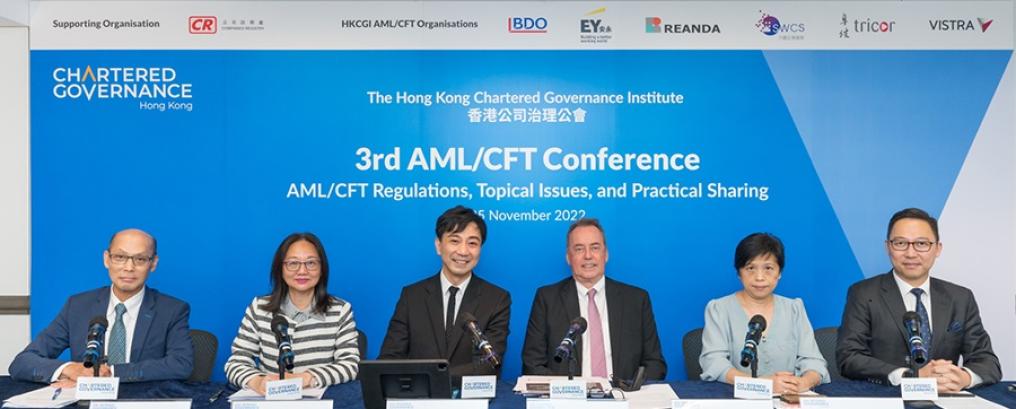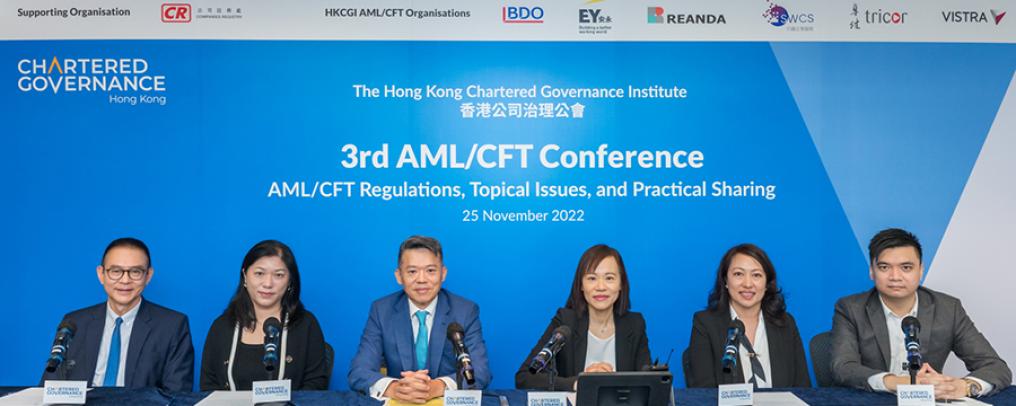In the first of this two-part article, Evelyn Chan, Partner, and Adriel Wong, Associate of Gall, provide a general overview of Hong Kong’s civil litigation process.
When a dispute over rights and obligations between two parties arises, the parties may commence civil litigation. At the end of the litigation, the court will determine whether and to what extent a party’s rights have been infringed, and the appropriate remedies or compensation that the party is entitled to. Commencing civil litigation may not be as straightforward as one would think though, and the road from commencement to judgment can be lengthy and complex. This two-part article provides a short guide to the civil litigation procedure in Hong Kong so that prospective litigants may be more informed before commencing litigation.
1. Which are the various courts in Hong Kong that preside over civil disputes?
It will depend upon the nature of the claim, as well as its value. There are a number of tribunals in Hong Kong, including:
- the Small Claims Tribunal, which handles civil claims up to HK$75,000 for contract, quasi-contract and tort claims
- the Labour Tribunal, which has jurisdiction over claims arising under the Employment Ordinance
- the Lands Tribunal, which has jurisdiction over various claims relating to land and building management, and
- the Market Misconduct Tribunal, which deals with matters relating to market misconduct (for example, insider dealing, false trading and price rigging).
The Civil courts in Hong Kong consist of:
- The District Court.
- The High Court (the Court of First Instance and the Court of Appeal).
- The Court of Final Appeal.
The District Court
The District Court has limited jurisdiction over civil matters (as well as criminal matters). The types of civil claims that it hears are set out below:
- contract, quasi-contract and/or tort claims with a value in excess of HK$75,000, but not more than HK$3 million
- claims for possession of land or premises, where the annual rateable value does not exceed HK$320,000
- recovery of less than 12 months of rental arrears only (known as ‘distress’)
- claims in equity (for example, specific performance, dissolution of a partnership and relief against fraud or mistakes). Where proceedings do not relate to land, the maximum value involved shall not exceed HK$3 million. Where proceedings do relate to land, the maximum value involved shall not exceed HK$7 million (and if the proceedings relate to the recovery of land or title to land, the rateable value of the land must not exceed HK$320,000), and
- matrimonial cases, including divorce, maintenance, custody, and the adoption of children.
The High Court
The High Court comprises of two divisions – the Court of First Instance and the Court of Appeal.
The Court of First Instance has unlimited jurisdiction over all civil claims. It is the only court in Hong Kong where cases are tried by a judge with a jury. Common types of civil proceedings in the Court of First Instance include:
- monetary claims for HK$3 million or above
- all other claims falling outside the District Court’s jurisdiction
- claims that are exclusively commenced in the Court of First Instance, including judicial review, company winding-up and bankruptcy, and
- appeals from the Labour Tribunal and the Small Claims Tribunal (on a point of law).
The Court of Appeal hears civil (and criminal) appeals from the District Court and the Court of First Instance, as well as appeals from certain statutory bodies such as the Lands Tribunal.
The Court of Final Appeal
The Court of Final Appeal is the highest and final appellate court in Hong Kong. It hears appeals at the discretion of the Court of Appeal or the Court of Final Appeal in any civil matter. Leave to appeal is required. The appeal is determined and heard by the Chief Justice, three permanent judges and either one non-permanent Hong Kong judge or one judge from another common law jurisdiction.
2. Are there any deadlines for bringing a claim?
Limitation periods stipulated under the Limitation Ordinance (Cap 347) apply. The actual limitation period depends upon the nature of the claim.
- For contract claims (other than under seal): six years from the date of breach of contract.
- For contract under seal claims: 12 years from the date of breach of contract.
- For personal injury claims: generally three years from the date of the accident or the date of knowledge of the injury by the plaintiff, whichever is the later. If the injury occurred in the course of an employee’s employment and an application should be made under the Employee’s Compensation Ordinance (Cap 282), the time limit shall be two years from the date of the accident.
- For fatal accident claims: three years from the date of death or the date of knowledge of the death by the deceased’s dependent, whichever is the later. If the fatal accident occurred in the course of an employee’s employment and an application should be made under the Employee’s Compensation Ordinance, the time limit shall be two years from the date of death, or prior to the determination made by the Commissioner for Labour as to the payable compensation in respect of the death.
- For actions to recover possession of land: 12 years from the date on which the right of action accrued to the plaintiff or to a person through whom the plaintiff claims. The right of action is deemed to have accrued on the date the plaintiff is dispossessed of his land or has his possession discontinued.
- For other tort claims: six years from the date of the tort.
Under exceptional circumstances, the above limitation periods may be extended. For instance, time does not begin to run for a disabled claimant until he or she ceases to be under a disability or has died. Similarly, where the action involves an element of fraud or concealment, time does not begin to run until the plaintiff has discovered the fraud, concealment or mistake, as the case may be.
3. How are civil court claims commenced?
There are four prescribed modes to commence proceedings: (1) writ of summons, (2) originating summons, (3) originating motion, and (4) petition. Originating motions are appropriate for certain types of action such as appeals, whereas petitions are for applications for the winding-up of a company, a bankruptcy order, the questioning of an election or certain matrimonial-related issues. The vast majority of actions are commenced by way of writ of summons or originating summons.
Originating summons are used when there is little to no dispute of facts, but rather the focus is on issues of law. Conversely, a writ of summons is more commonly used when there is a substantial dispute of facts.
Where the action is commenced by a writ, a Statement of Claim, setting out the details of the plaintiff’s claim and remedy, can be served together with the writ or alternatively at a later date (after the defendant acknowledges service of the writ and disputes the claim). If the plaintiff decides to file and serve the Statement of Claim at a later date, the writ must be endorsed with an Endorsement of Claim. It is important to note that the Statement of Claim, like all pleadings, must be verified with a statement of truth, which may be filed at a later date but as soon as possible.
4. What are the next steps after the issuance of the writ or the originating summons?
Once the writ/originating summons has been issued, it must be served on the defendant within 12 months, unless a time extension has been obtained from the court. The writ of summons should be accompanied by three copies of the acknowledgment of service form. Service on a Hong Kong defendant who is an individual may be effected by personal service, by registered mail or by insertion into the defendant’s letter box. If the defendant is outside Hong Kong, the plaintiff must obtain the permission of the court before serving the writ of summons.
After the writ (either with or without an accompanying Statement of Claim) or originating summons has been served, the defendant has 14 days (or 28 days if the defendant is outside Hong Kong) (inclusive of the day of service of the writ/originating summons) to file an acknowledgment of service indicating whether he/she intends to defend the claim.
If the writ is served with the Endorsement of Claim, the plaintiff must file and serve the Statement of Claim within 14 days after the date on which the defendant files the acknowledgment of service form indicating an intention to defend the action.
If the writ is served with the Statement of Claim, and the defendant files an acknowledgment of service indicating that he/she intends to contest the claim, then within 28 days following the expiry of the time limit for the defendant to file an acknowledgment of service, the defendant must file and serve on the plaintiff his or her defence to the plaintiff’s claim (and a counterclaim, if any).
If the Statement of Claim is served following the filing of the acknowledgement of service, then within 28 days after the date on which the Statement of Claim is served on the defendant, the defendant must file and serve his/her defence on the plaintiff (and his/her counterclaim, if any).
After the defence is served, the plaintiff may file a reply to the defence within 28 days. If the defendant files a counterclaim, and the plaintiff wishes to dispute it, the plaintiff should file a defence to the counterclaim within 28 days after the counterclaim is served.
In the event that (i) the defendant fails to file the acknowledgement of service within the prescribed time period, (ii) the defendant fails to file a defence within the prescribed time period, or (iii) the plaintiff fails to file a defence to the counterclaim within the prescribed time period, the other party can apply to the court for judgment in default. If the undefended claim is related to a debt or liquidated damages where the amount of the claim is fixed and ascertainable, the claiming party may enter final judgment for the amount claimed together with his/her legal costs. Where the claim is for unliquidated damages, an interlocutory judgment will be entered and the plaintiff will still need to have the court assess the amount of damages.
5. Is it possible to obtain early judgment in any other way?
If the defendant’s defence is not credible (and the matter is relatively straightforward), the plaintiff can apply for summary judgment. The defendant may contest an application for summary judgment. If it is successfully contested, the matter will proceed to trial. However, if the application for summary judgment is successful, the applicant will be awarded judgment in the matter.
6. What happens if there is no early judgment?
After the filing and service of the defence or the reply or defence to counterclaim, the pleadings are deemed to be closed within 28 days. A case management hearing will take place so that the court can give appropriate directions to the parties to prepare for trial. At the hearing, the parties will be directed to file and exchange the lists of relevant documents in their possession, or disclose and exchange witness statements as to facts within a specified period of time. Parties must provide to each other a list of documents describing the documents in their possession, custody or control. Documents that are considered to be privileged (such as legal advice privilege or litigation privilege) should still be listed under the category of privileged documents, although inspection may be refused. The necessity for any experts’ reports will be considered, with directions for them to be filed and exchanged within a specified period of time if applicable. Witness statements may also be filed and exchanged. Once all the directions of the court are complied with, the case may be ready for trial.
7. Is it possible to settle the matter before trial?
Parties are encouraged to engage in alternative dispute resolution, such as mediation. Mediation is a voluntary process. However, if a party unreasonably refuses to attempt mediation, the court may make an adverse costs order against that party. Even if settlement is not reached during a mediation, parties can still agree to settle at any time up to the conclusion of the trial.
If parties are facing a commercial dispute, such dispute can be resolved through arbitration. However, both parties must agree to resolve the dispute by arbitration and an arbitration clause should have been included in the commercial contract.
8. What is mediation?
Mediation is a voluntary dispute resolution process conducted by a mediator. The mediator is usually legally qualified, and he/she assists and encourages the parties to reach a settlement. He/she cannot compel a settlement, rather the parties retain control of the process and the decisions. The mediation is informal, and the process is confidential. A mediation typically lasts for a half day or a full day, depending upon the complexity of the matter.
9. What is arbitration?
Arbitration is a consensual dispute resolution process conducted by an arbitrator usually appointed by the parties or by the arbitral venue itself. Unlike mediation, arbitral awards are final and can be enforced under the New York Convention.
Evelyn Chan, Partner, and Adriel Wong, Associate
Gall



